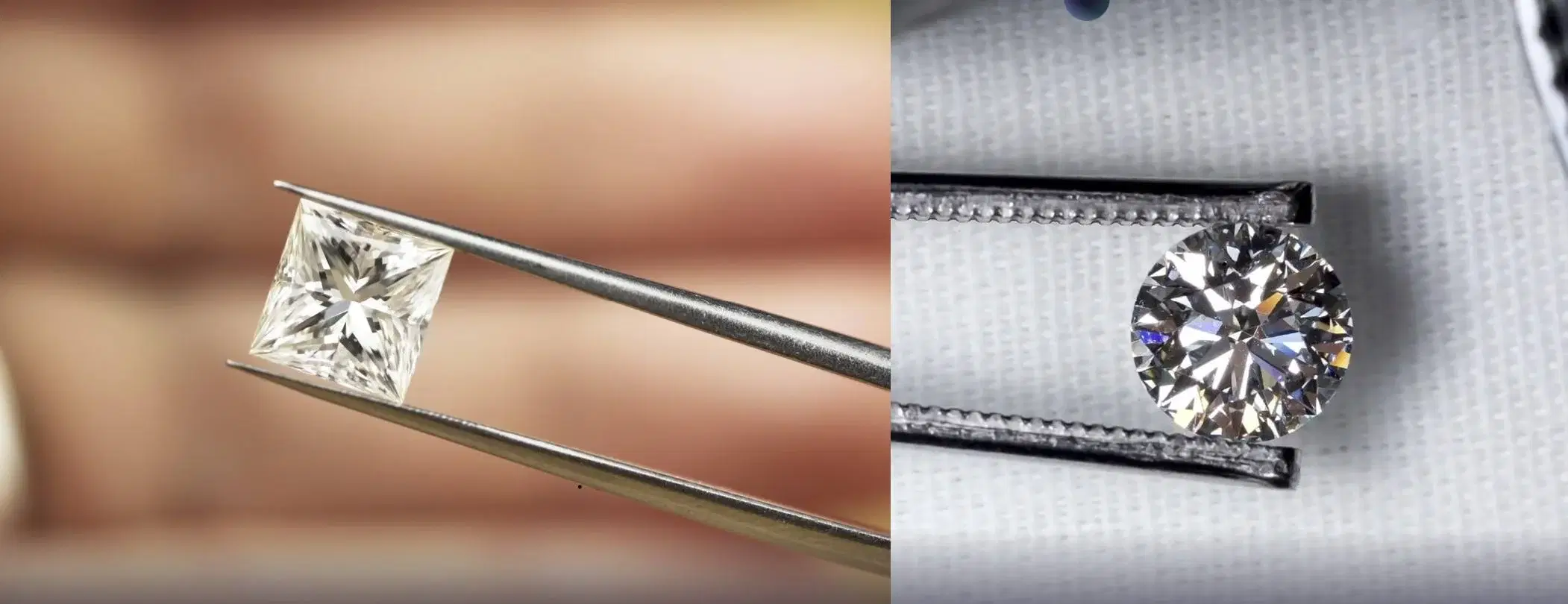
Out of the 4Cs of diamond quality, the cut is the C that should be emphasized to get the best light reflection and refraction. Several modifications to the round cut design have occurred over the years. It was formally called the circular brilliant cut, and later, in the 1950s, became the modern round brilliant as it is currently known. In all these phases, the proportions of the cut varied significantly, giving the diamond a different face-up pattern. Each stage of cut development resulted in an improved facet pattern and light performance. The average number of facets on a round brilliant cut is 57 or 58 when the round cut has a culet. The modern round cut has a larger table and longer pavilion facets compared to earlier versions. Table 1 below shows the ideal measurements of the various parts of a round cut stone.
Table 1. Chart of the Depth, Table, and Other Percentages for a Round Cut
|
Cut |
Table (%) |
Depth (%) |
Crown Angle |
Pavilion Depth |
Girdle |
Culet |
Length to width Ratio |
|
Excellent |
53 - 58 |
59 - 62.3 |
34 - 34.9 |
42.8 - 43.2 |
Thin to Slightly Thick |
None |
1.00 - 1.01 |
|
Very Good |
|
58 - 58.9 or 62.4 - 63.5 |
32.1 - 33.9 or 35 - 35.9 |
42 - 42.7 or 43.3 - 43.9 |
|
Very Small |
1.00 - 1.01 |
|
Good |
51 or 61 - 64 |
57.5 - 57.9 or 63.6 - 64.1 |
30.1 - 32 or 36 - 37.9 |
41 - 41.9 or 44 - 45.5 |
|
Small |
1.00 - 1.01 |
|
Fair |
50 or 65 - 69 |
56.5 - 57.4 or 64.2 - 65 |
29 - 30 or 38 - 40.5 |
39 - 40.9 or 45.6 - 48 |
Very Thin to Very Thick |
Medium |
1.02 |
|
Poor |
< 50 or > 69 |
|
< 29 or > 40.5 |
< 39 or > 48 |
|
>Medium |
|
To grade the round cut, the GIA has a system specifically for unmodified round cut stones. It ranges from excellent to poor cut. An excellent round cut would be the best value for money when buying a round cut stone. The very good or good cut are workable alternatives and will get you a diamond with above-average brilliance and fire. Whereas the round cut is characterized by smooth rounded edges throughout, the princess cut has sharp corners. It has a square shape, hence the likening to the base of an inverted pyramid. Being a square-shaped stone means it has pointed, sharp corners susceptible to chipping. You can chamfer the corners for a smooth edge but risk affecting brilliance. Therefore, you will be better off leaving the stone intact and being cautious with it instead. Unfortunately, the GIA has no cut grading scale for princess cut diamonds. For princess cut analysis, the AGS proportions and light performance grading system outweighs the rest of the grading criteria. To get insights on the ideal dimensions of a princess cut stone, see Table 2 below.
Table 2. Chart of the Depth, Table, and Other Percentages for a Princess Cut
|
Cut |
Table (%) |
Depth (%) |
Girdle |
Culet |
Length to width Ratio |
|
Excellent |
67 – 72 |
64 – 75 |
Very Thin - Slightly Thick |
None |
|
|
Very Good |
59 - 66 or 73 - 75 |
64 – 75 |
Very Thin - Slightly Thick |
Very Small |
|
|
Good |
56 - 58 or 76 - 82 |
58 - 63.9 or 75.1 - 80 |
Very Thin to Thick |
Small |
|
|
Fair |
|
56 - 57.9 or 80.1 - 84 |
Very Thin to Very Thick |
Medium |
|
|
Poor |
< 53 or > 85 |
< 56 or > 84 |
Extremely Thin to Extremely Thick |
> Medium |
> 1.08 |


